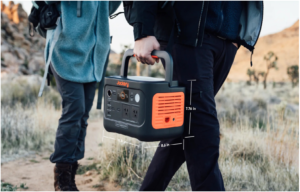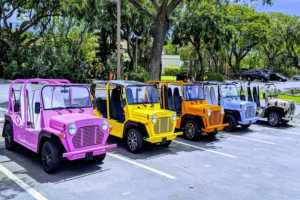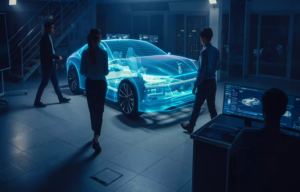Is an LSV Right for Your Daily Commute
3 min read
When we hear daily commutes, most of us automatically envision being in a car, on a bike, bus or train. However, low-speed vehicles (LSVs) or street legal LSVs have emerged as a new alternative for local transportation in the past few years. You may already have seen electric golf-cart models in your community- low-speed vehicles, or LSVs.
But will they do you for that trip to work each day? Discuss pros, cons and possible factors before making a decision.
What is an LSV?
A Low Speed Vehicle is an electric or gas-powered vehicle that, within its small scope, can travel at speeds of roughly 20–25 mph. This may include areas within neighborhoods, resorts, campuses and/or gated communities. Most areas are road-legal with speed limits (as high as 35 mph)
They appear like golf carts but are engineered to comply with safety regulations, including seat belts, headlights, turn signals, mirrors, and a windshield.
Reasons to Use an LSV for Your Commute
-
Environmentally Friendly
The latter remains the same, but with an electric LSV, you get no emissions when on the road. This, in turn, leads to cleaner air and a reduced carbon footprint compared to gas cars.
-
Lower Operating Costs
Electric LSVs cost much more to recharge than to fill up the tank of a car.
-
Easy to Park
Because LSVs are so small compared to regular cars, they’re generally easier to park, especially in tight areas!
-
Comfortable for Short Trips
Whether you are a few miles from your office, school or retail establishment, an LSV can get you to your job, taking the worry out of running errands at these close distances.
-
Quiet Ride
This produces very little noise, which allows us to have a smoother ride.
Before You Buy an LSV
-
Speed Limitations
They have a maximum speed of only 25 mph and are not intended for highway use or travel at the same speed as surrounding traffic. These should be on roads with a speed limit of 35 mph or lower.
-
Range
Electric LSVs generally have electric ranges of 30 to 50 miles on a single charge. Great for short hops and commuting to work if you can charge there, but hopeless for longer-distance travel.
-
Weather Protection
LSVs tend to be open-sided or lightly weather-protected. Unless you opt for a fully enclosed model, this could get tricky during rain or snow — hide all the kids!
-
Passenger and Cargo Space
Generally, LSVs can carry 2 to 4 passengers and a small cargo area. And bright as the little Mito is, it isn’t convenient if you frequently transport more than a couple of people (or large portraits).
-
Local Laws
LSV rules vary by region. We are talking about… confirming that drive bikes are feasible on the roads you want to use, and should you need registration, insurance or a driver’s license.
When You Need a Standard Car Instead
This service will be optimal if there are roads, long distances, or loads need to traverse more than 1 kilometer for city users who take the car on public transport and drive full private vehicles such as their bicycles, bicycles, children’s strollers and cargo cars to work-school distance less than 1 km — not the best convenience of Pinpoint. An LSV was never designed to replace your full-size vehicle for all needs — instead, it’s supposed to be a basic, local transport fix.
Final Thoughts
Low-speed vehicles are intelligent, environmentally friendly, and cost-effective options for short daily commutes. They help cut emissions, save money and make non-essential travel easy. But they’re not for everybody. When switching, consider your route, regional road rules, and the likelihood of precipitation.
Because of noiseless, green, and stress-free commuting, this could be the best way to travel if your daily drive is right there in the LSV lifestyle.






